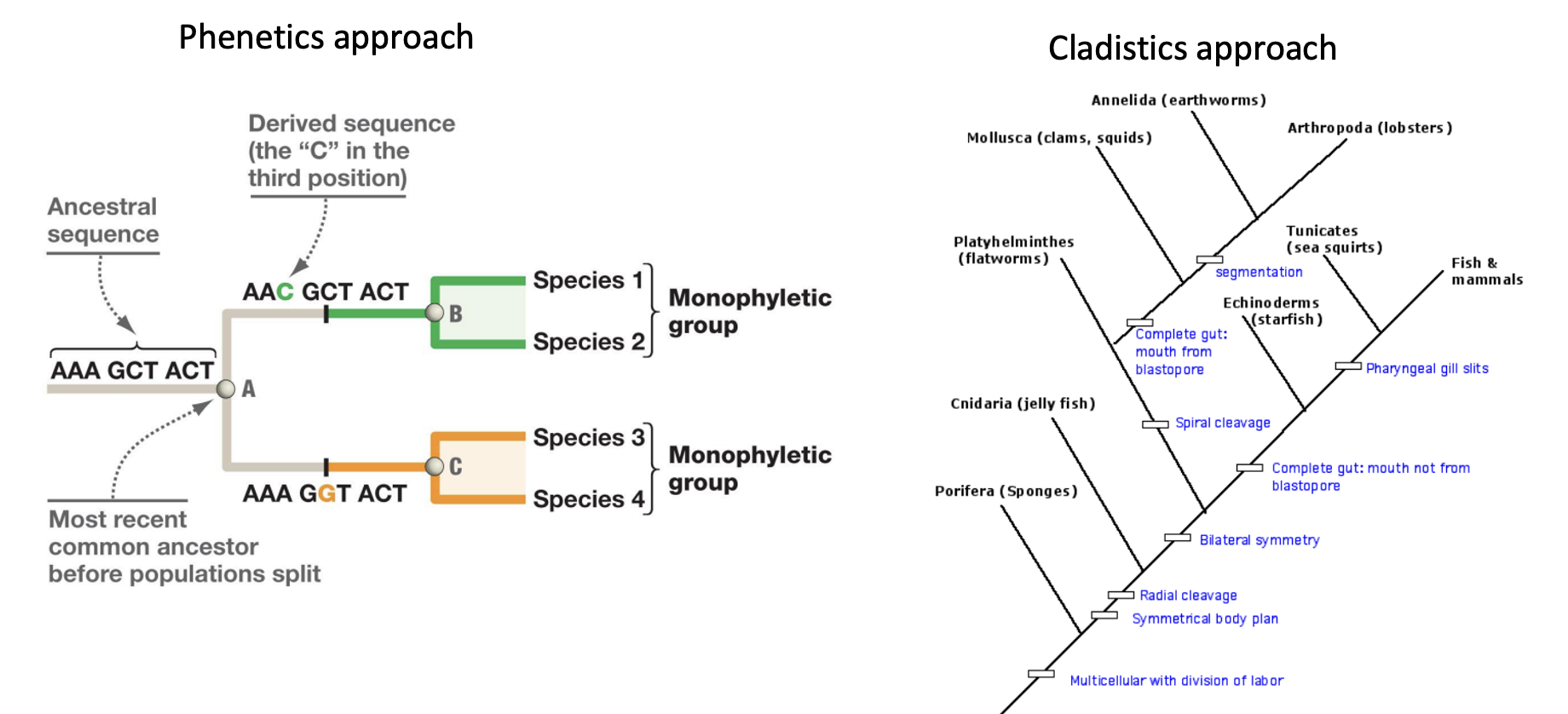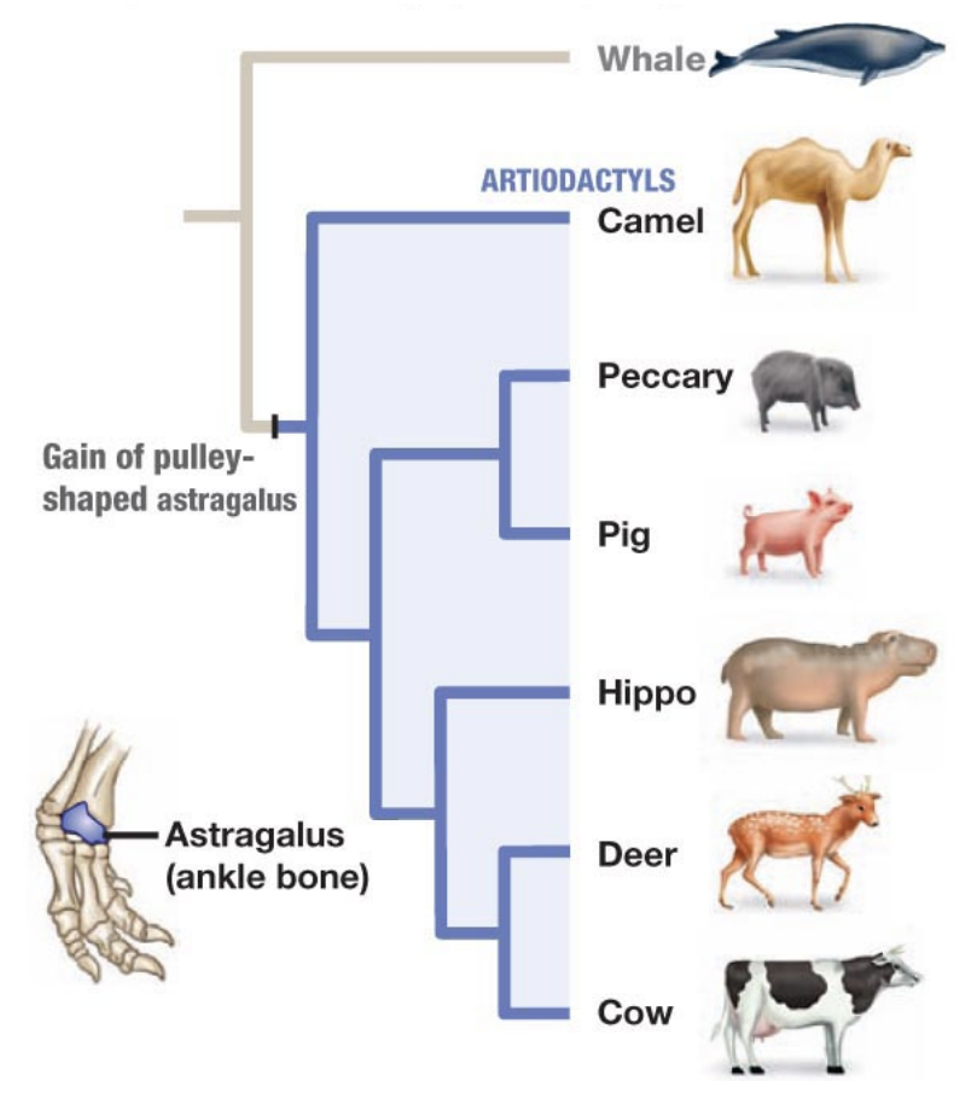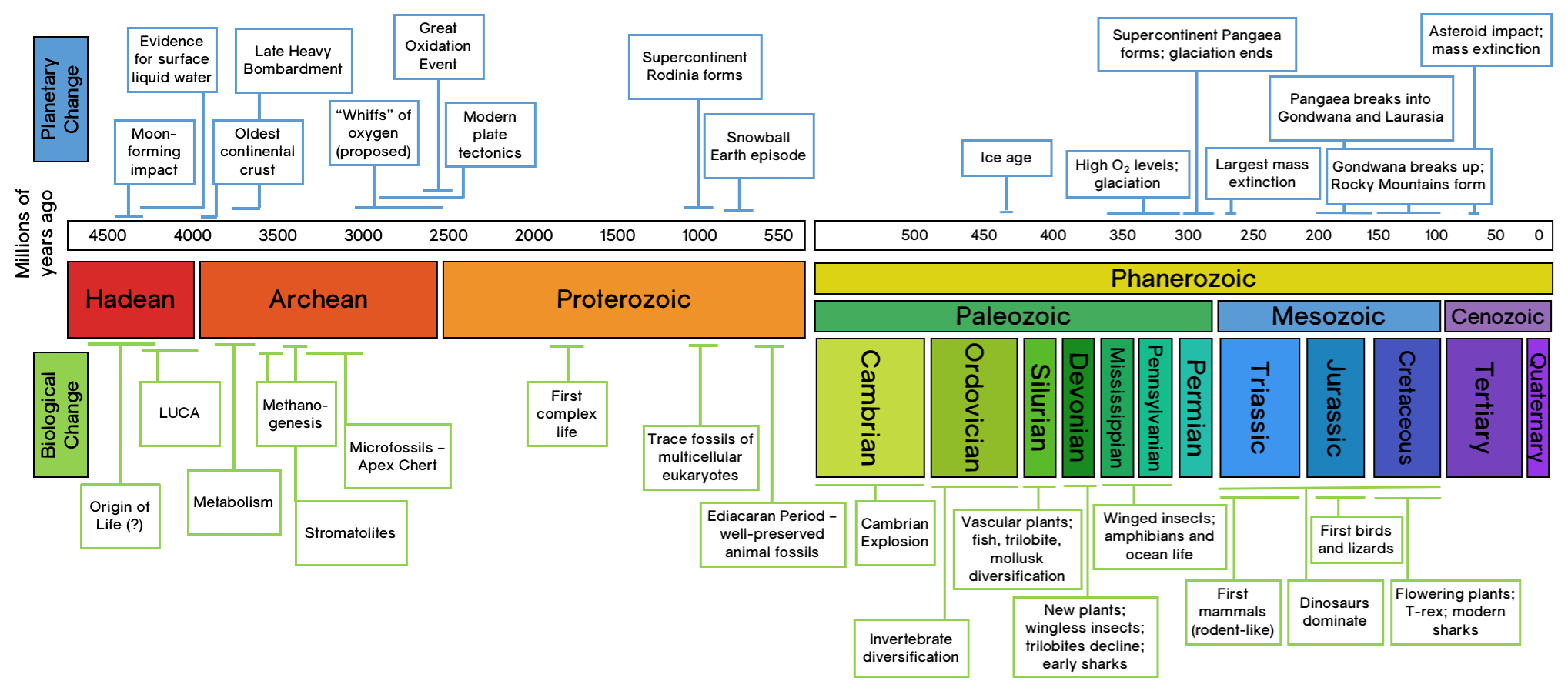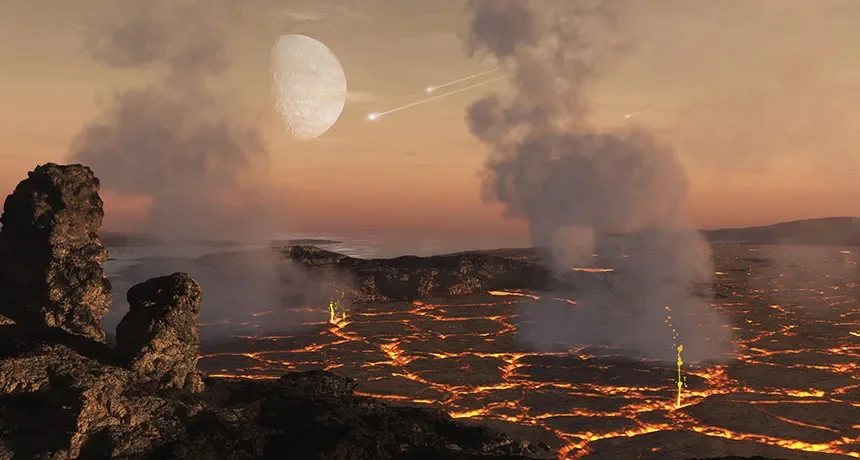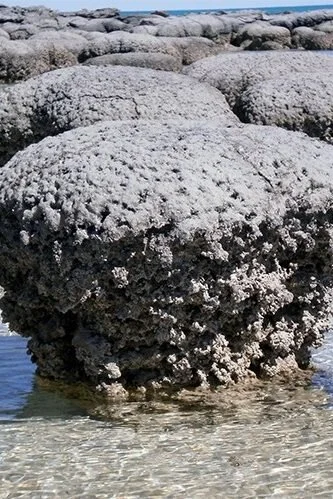Chapter: Phylogenies and A Brief History of Life
What Is a Phylogeny, Anyway?
Let’s start with the word itself: phylogeny. “Phylo” means “branch,” and “geny” comes from “genesis,” meaning “origin” or “creation.” Together, they describe the branching history of life on Earth. But the term does more than define — it represents a powerful tool for exploring how species are related through evolutionary time.
The science of phylogenetics allows us to reconstruct the evolutionary history of organisms using genetic data, physical traits, and fossil evidence. Once these relationships are understood, we can visualize them using a phylogenetic tree. These trees are like evolutionary family trees, showing ancestor–descendant relationships over millions of years. The closer two species (or taxa) appear on the tree, the more closely related they are.
To build these trees, scientists use a combination of DNA comparison, morphological analysis, and fossil records. While DNA gives us a molecular fingerprint, fossils are the only direct evidence of what ancient organisms looked like, when they lived, and where.
Reading a Phylogenetic Tree
Understanding the language of phylogenetic trees is key:
Figure 1. Basics of a phylogeny
Branches represent the evolutionary path of a lineage over time.
Nodes are split points on the tree—like forks in the road—representing speciation events where one species became two.
Terminal nodes (tips) are the ends of the branches, representing living or extinct species. If a branch reaches the far right, it means the species is still alive today. Shorter branches that don’t reach the edge suggest extinction.
How Phylogenies Are Built
There are two main strategies used to construct phylogenetic trees:
1. The Phenetic Approach
Figure 2. The phenetic approach typically compares DNA (or other biological molecules like RNA or proteins) to construct phylogenies. Whereas the cladistics approach, compares physical morphologies to construct phylogenies. In reality, both of the methods are used in concert.
This method uses quantitative measures, usually based on DNA sequence similarity, to group organisms. The more alike two sequences are, the closer those species appear on the tree. It’s fast, data-driven, and great for analyzing large datasets — but it doesn’t always capture the why behind the similarity.
2. The Cladistic Approach
Cladistics focuses on shared physical characteristics (morphologies) known as synapomorphies — traits inherited from a common ancestor. Organisms that share these derived traits are grouped into clades, or monophyletic groups.
For example:
All multicellular animals form a clade.
Among those, animals with body symmetry form a narrower clade.
From there, symmetrical animals are divided based on whether they are bilaterally or radially symmetrical.
This approach lets you “walk up” the evolutionary tree by narrowing possibilities based on traits — like detective work for biology. But is morphology always a reliable guide?
Homology vs. Homoplasy
Figure 3. Homoplasy is where two organisms share common characteristics, though not due to common ancestry.
Not always. Some traits that look similar evolved independently in unrelated groups, due to similar environmental pressures. This phenomenon is known as homoplasy.
Example: Dolphin vs. Ichthyosaur
Dolphins (mammals) and ichthyosaurs (extinct reptiles) both have streamlined bodies, long jaws, and sharp teeth — adaptations for fast swimming in open water. But these traits evolved independently. They aren’t inherited from a shared ancestor — they’re the result of convergent evolution, where similar environments shape similar solutions.
Figure 4. Homologies are morphological similarities shared by a common ancestor.
In contrast, homology refers to traits that are similar because of shared ancestry. For example, the forelimbs of whales, cats, and humans look different on the surface, but they share the same underlying bone structure — a classic example of homology.
Flight and Convergence
Flight is another case of homoplasy. Birds and bats both fly, but they evolved this ability separately. Their wings are built differently — bird wings are modified arms with feathers, while bat wings are stretched skin over elongated fingers. Despite similar function, their wings are not homologous.
To tell homology from homoplasy, scientists look for intermediate forms and genetic evidence. Homologous traits usually show up in transitional fossils and share common genetic signatures.
Parsimony: Keeping It Simple
Figure 5. Parsimony. When constructing phylogenetic trees, we start with parsimony, The simplest explanation (containing the fewest changes) is most likely reality,
Most phylogenetic trees are built using the principle of parsimony — the idea that the simplest explanation, requiring the fewest changes, is most likely correct. Evolution tends to be economical; it doesn’t reinvent the wheel if it doesn’t have to.
For instance, if you’re grouping shapes and three of them are circles while one is a triangle, parsimony suggests the three circles are more closely related. But evolution isn’t always that tidy...
When Parsimony Fails: Whale Evolution
Figure 6. Parsimony isn’t always correct, as is the case of the whale and the astragalus bond.
Take whales. Genetically, whales are closest to hippos, which are part of a group called artiodactyls (even-toed hoofed animals like cows, pigs, and deer). Artiodactyls all have a unique ankle bone called the astragalus. But whales don’t — they lost it during their return to aquatic life.
Morphologically, whales shouldn’t belong in the artiodactyl group — they don’t share the astragalus trait. But DNA doesn’t lie: whales and hippos share more genes with each other than with any other group. So to reflect reality, we have to accept that the astragalus evolved and was later lost — a scenario less parsimonious, but more accurate.
A Brief History of Life on Earth
The Birth of Earth and the Solar System
Approximately 4.6 billion years ago, the Earth and the rest of our solar system came into existence. But how can scientists be so confident about this timeline? The answer lies in the science of radiometric dating. When rocks form, they incorporate specific elements that undergo radioactive decay—a predictable process where unstable "parent" isotopes transform into stable "daughter" isotopes over time. By measuring the ratio of these isotopes, scientists can determine the age of the rock.
A widely used method in this field is potassium-argon dating, which takes advantage of the decay of potassium-40 into argon-40. This radiometric clock begins ticking the moment magma cools and solidifies into rock. Scientists have applied this technique to meteorites—rock fragments from space that fell to Earth—and consistently found them to be around 4.6 billion years old. These findings corroborate the estimated age of both Earth and the solar system.
The Oldest Rocks on Earth
The oldest known rocks on Earth, discovered in northern Quebec, date back to about 4.0 billion years ago. The scarcity of older rocks is due to Earth's active geology: plate tectonics, erosion, and other dynamic processes continuously recycle the crust. That any rocks from this early period have survived is remarkable.
Dividing Earth’s History
To make sense of Earth's deep past, geologists divide its history into hierarchical time units: eons, eras, and periods. Eons represent the broadest divisions. Among the four recognized eons, the Precambrian and the Phanerozoic are the most prominent. The Precambrian encompasses the time before complex life forms evolved, while the Phanerozoic includes the era of visible, abundant animal and plant life, beginning roughly 541 million years ago.
The Phanerozoic Eon is subdivided into three major eras: the Paleozoic, the Mesozoic, and the Cenozoic. These eras are further divided into periods, each marked by significant geological and biological events. For example, the Jurassic Period is known for its dinosaurs, and the Quaternary Period includes the rise of human civilization.
Figure 7. Earth’s Geologic Timeline
The Precambrian Supereon (4.6 – 541 Million Years Ago)
Covering nearly 90% of Earth's history, the Precambrian Supereon spans three eons: the Hadean, the Archean, and the Proterozoic. Although life during this time was mostly microscopic, foundational biological developments laid the groundwork for future complexity.
The Hadean Eon (4.6 – 4.0 Billion Years Ago)
Earth’s earliest eon, the Hadean, was named for its hellish conditions. The young planet endured heavy asteroid bombardment, intense volcanism, and a molten surface. During this time, a Mars-sized object is believed to have collided with Earth, ejecting debris that eventually formed the Moon. Volcanic steam condensed to form the first oceans, marking a critical step toward a more stable planet.
Figure 8. The Hadean Eon was lifeless and geologically violent.
Figure 9. Stromatolites, representative of the first fossils to appear in the record in the Archaean Eon.
The Archean Eon (4.0 – 2.5 Billion Years Ago)
As Earth cooled, a solid crust formed and conditions became more hospitable to life. Although we don’t know what the first organisms looked like, they were certainly unicellular and thrived in an anoxic environment. Chemical evidence of life appears in 3.85-billion-year-old rocks from Greenland, which contain a higher proportion of carbon-12—an isotope preferentially used by living organisms.
The first visible evidence of life comes from stromatolites, which are layered structures formed by colonies of photosynthetic cyanobacteria. These bacteria lived in shallow marine environments and, as they trapped sediments, formed dome-shaped mounds. Fossilized stromatolites dating back 3.45 billion years have been found in Western Australia, and modern examples still survive today in places like Shark Bay.
The Proterozoic Eon (2.5 Billion – 541 Million Years Ago)
Figure 10. Multicellularity emerges in the Proterozoic Eon, fueled by increasing oxygen and the emergence of cellular respiration.
The evolution of cyanobacteria had profound consequences. By using photosynthesis, they began converting carbon dioxide into organic matter and oxygen. This led to the Great Oxygenation Event, drastically altering Earth’s atmosphere and oceans. The increased oxygen enabled aerobic respiration, which is far more efficient than anaerobic pathways and allowed life to become more energy-rich and eventually more complex.
Eukaryotic cells—those with nuclei and internal organelles—emerged during this eon, likely through a process known as endosymbiosis, in which one cell engulfed another that then continued to live symbiotically. This innovation paved the way for multicellular life. Fossil evidence, such as that from red algae, also indicates that sexual reproduction began during the Proterozoic, increasing genetic diversity and driving evolution forward. By the end of this eon, oxygen-rich oceans supported a growing and increasingly complex biomass, setting the stage for a dramatic evolutionary leap.
The Phanerozoic Eon (541 Million Years Ago – Present)
The Paleozoic Era (541– 252 Million Years Ago)
Figure 11. Fossil Evidence of the Cambrian Radiation and just before.
The Phanerozoic Eon opens with the Cambrian Explosion, a period of rapid evolutionary diversification. During this time, nearly all major animal body plans appeared. Organisms developed eyes, exoskeletons, limbs, and other adaptations—including predation—for the first time. This evolutionary "arms race" spurred even faster development.
Significant fossil sites from this era include the Burgess Shale in Canada, which preserves soft-bodied organisms in remarkable detail, and the Doushantuo Formation in China, which offers glimpses of early cellular structures and potentially the first bilaterians. Preceding the Cambrian, the Ediacaran Biota—found in Australia and elsewhere—represents an enigmatic group of organisms that may have been precursors to later animal life.
The Mesozoic Era (252 – 66 Million Years Ago)
Often called the Age of Reptiles, the Mesozoic Era saw the rise and dominance of dinosaurs, but it was also marked by the appearance of mammals, birds, and flowering plants. In the Triassic Period, life began to recover from the Permian mass extinction, with the emergence of early dinosaurs, pterosaurs, and mammals. The Jurassic Period witnessed the height of dinosaur dominance, lush forests, and marine reptiles like ichthyosaurs. The Cretaceous Period brought further diversification of mammals and the spread of flowering plants. This era ended with a mass extinction, likely caused by a massive asteroid impact at Chicxulub and intensified by volcanic activity in the Deccan Traps.
The Cenozoic Era (66 Million Years Ago – Present)
The extinction of the dinosaurs opened ecological niches for mammals, which quickly diversified and spread into numerous habitats. Known as the Age of Mammals, the Cenozoic Era saw incredible evolutionary branching. During the Paleogene Period, mammals expanded into forests, oceans, and skies. The Neogene Period saw the proliferation of grasses, which shaped the evolution of grazing animals, and also the appearance of early hominins. Finally, the Quaternary Period is marked by repeated ice ages and the rise of Homo sapiens. Modern humans evolved, spread across the globe, and began transforming the planet in unprecedented ways.


